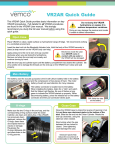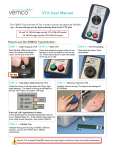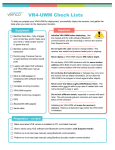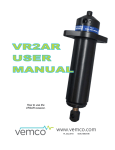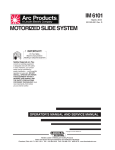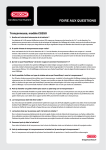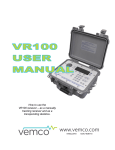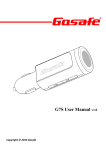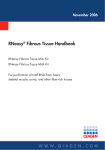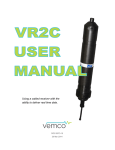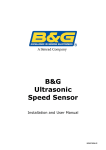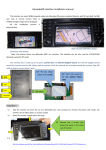Download VR2AR Deployment Tips Quick Guide
Transcript
VR2AR Deployment Tips This VR2AR Deployment Tips provides necessary information and tips to use when deploying a VR2AR. Full details for all VR2AR procedures are found in the VR2AR User manual. We strongly recommend you study the full user manual before using this quick guide. Do not bump the VR2AR hydrophone or expose it to extreme temperature variations. Doing so may damage the receiver and render it unable to detect transmitters. Weight/Floatation For typical deployments, we recommend using 36 – 68 kg (80 – 150 lbs) weight with between 7 – 14 kg (15 – 30 lb) floatation. Modifications may need to be made for deployment situations that are not typical. A buoyancy of 7 – 14 kg is recommended to raise the VR2AR when no biofouling has occurred – adjust this as needed for your deployment location conditions. The floatation must be suitable for the depth at which it will be deployed. Separate loadIn rougher conditions, heavier weights and mooring bearing line lines are usually required. During deployment, always lift the weight section using a load-bearing line – separate from the VR2AR. Never lift the weight in air by attaching to the VR2AR. Never lift the weight in air by attaching to the VR2AR. Always lift the weight using a separate load-bearing line. Mooring Attachment A common method used to attach a VR2AR transceiver to a mooring line is to thread the rope through one of the holes in the float attachment bracket, wrap it around the circumference of the transceiver, and up through the other hole in the float attachment bracket, as shown below. A minimum size of 5/8" diameter nylon rope is suggested. Pass a shackle through the mooring lug and use the 5/8” diameter rope through the shackle. 5/8" diameter nylon rope (suggested minimum) Floatation Placement Attach the VR2AR’s float attachment bracket to a floatation device capable of withstanding pressure since it will be submerged. Hard skinned floatation devices are recommended. Position the float between 1 – 3 meters (3 – 10 feet) from the receiver to reduce the effect the float has on the VR2AR’s detection range. Objects near the hydrophone can block acoustic signals, causing a “shadow zone” where tags are not heard. Increasing the distance to the float will reduce the shadow area, as illustrated here. CAUTION: The hydrophone must be kept free of mooring lines and obstructions. Objects around the hydrophone will adversely affect the detection range of the VR2AR transceiver. Tilt Always check the tilt of the transceiver after it is deployed to verify it is vertical with the hydrophone pointing up (0 - 11°). This is done using a VR100 and a transponding hydrophone. Details are found in the VR100 Acoustic Communication manual. Biofouling Some customers use a rubber shrink tape, such as DAFLEX ST250 Cold Shrink Tape, available from Digikey (W211-ND), to prevent biofouling on the VR2AR transceiver. It can be used to cover the transceiver body (don’t cover the hydrophone or the Release Valve) and does not leave a glue residue when removed. Another option is to use an antifouling paint, such as Interlux Micron CSC. Keep the hydrophone uncovered to prevent acoustic dampening. Never cover the Status Light/Release Valve. Basic instructions for using a VR2AR are found in the VR2AR Quick Guide while instructions for communicating acoustically with a VR2AR while it is deployed are found in the Transceiver Field Communication Quick Guide. The release valve must be able to pop open if needed and must not be blocked by tape or paint. www.vemco.com +1-902-450-1700 DOC-5640-01


